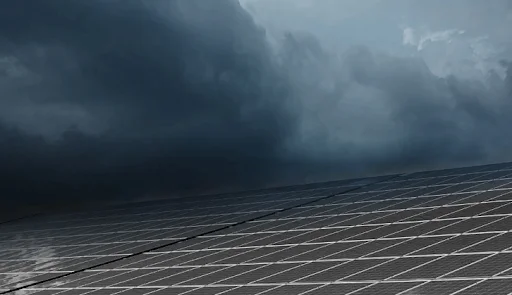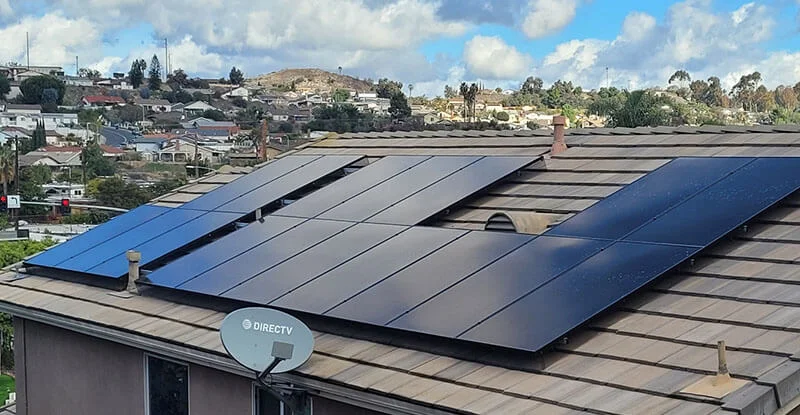Assessing the Durability of Solar Panels: Can They Withstand Hurricanes and Extreme Weather?

Solar panels have become popular for generating electricity because they provide clean energy. However, with the increase in extreme weather events like hurricanes, heavy storms, and hail, many wonder whether solar panels can survive such conditions. This article will explore the durability of solar panels and whether they can withstand hurricanes and other extreme weather events.
Understanding the Basics of Solar Panel Durability
Solar panels are designed to be long-lasting and durable. Most manufacturers offer warranties that last between 20 and 25 years, and many panels continue to produce electricity even after 30 years. But what makes solar panels so durable?
- Material Strength: Solar panels are made from high-quality materials like tempered glass and aluminum frames. The tempered glass is designed to withstand impacts, such as hailstones, without breaking.
- Sealing and Protection: The solar cells inside the panels are protected by layers of materials that seal them from moisture, dust, and other environmental factors. This helps to prevent any damage that could reduce their efficiency.
- Testing and Certification: Solar panels undergo rigorous testing to meet industry standards before selling. These tests include exposure to high winds, heavy rain, and extreme temperatures to ensure they can withstand real-world conditions.
Can Solar Panels Withstand Hurricanes?
Hurricanes are among the most powerful and destructive natural disasters, bringing strong winds, heavy rain, and sometimes hail. So, can solar panels survive a hurricane?
Wind Resistance
One of the main concerns during a hurricane is the wind. Hurricanes can produce winds exceeding 150 miles per hour (mph), easily damaging or destroying poorly installed structures. Fortunately, most solar panels are designed to withstand high winds.
- Standard Wind Rating: The average solar panel is rated to withstand winds up to 140 mph. This is equivalent to a Category 4 hurricane, which is strong but not the most severe type of hurricane.
- Enhanced Wind Resistance: In areas prone to hurricanes, some solar panels are installed with additional reinforcements, such as stronger mounting systems, to increase their wind resistance to 180 mph or more. This allows them to withstand even the most severe Category 5 hurricanes.
Impact Resistance
Another concern during hurricanes is flying debris, which can damage solar panels. However, as mentioned earlier, the tempered glass used in solar panels is designed to resist impacts.
- Hail Testing: Solar panels are tested to withstand hailstones up to 1 inch in diameter, shot at up to 50 mph speeds. While this may not cover all possible scenarios, it provides good protection against common types of debris.
Rain and Water Damage
Heavy rain and flooding are common during hurricanes, raising concerns about water damage to solar panels. However, solar panels are waterproof and designed to handle even the heaviest rain.
- Waterproof Sealing: The sealing used in solar panels prevents water from entering the electrical components, ensuring they continue to function properly even during prolonged exposure to rain.
- Corrosion Resistance: For areas near the coast where saltwater exposure is a concern, solar panels are often made with corrosion-resistant materials to prevent damage from salt.
Real-Life Examples of Solar Panels Surviving Hurricanes
There are several real-life examples of solar panels successfully withstanding hurricanes. Here are a few notable cases:
- Hurricane Irma (2017): Hurricane Irma was one of the most powerful hurricanes ever recorded in the Atlantic, with winds reaching 185 mph. In Florida, where the hurricane made landfall, many solar panel systems survived with little to no damage. For example, a 10-acre solar farm in the Florida Keys, despite being in the direct path of the hurricane, experienced only minor damage, with the vast majority of panels remaining intact.
- Hurricane Maria (2017): Hurricane Maria devastated much of Puerto Rico's infrastructure, but some solar panel systems fared better than others. A notable example is the solar panel installation at a children's hospital in San Juan, which remained operational and provided critical power during the storm's aftermath.
- Hurricane Sandy (2012): A solar power system installed on a roof in New Jersey survived the storm, with winds reaching 90 mph. The system continued to generate electricity after the hurricane, providing power to the building during widespread outages.
Factors That Influence Solar Panel Durability in Extreme Weather
While solar panels are generally durable, they can withstand extreme weather depending on several factors. Here are some of the key factors that influence solar panel durability:
1. Quality of Installation
Proper installation is crucial to the durability of solar panels, especially in areas prone to extreme weather. A poorly installed system is more likely to be damaged during a hurricane or storm.
- Professional Installation: Hiring a certified and experienced solar installer is essential to ensure the panels are securely mounted and withstand high winds.
- Proper Mounting: The mounting system should be designed to handle the area's specific wind loads. This may involve using additional reinforcements or specialized mounting systems in hurricane-prone regions.
2. Location and Orientation
The location and orientation of the solar panels can also impact their durability during extreme weather.
- Wind Exposure: Panels installed on flat roofs or open areas are more exposed to wind than those installed on sloped roofs or sheltered areas.
- Tilt Angle: The angle at which the panels are installed can affect their wind resistance. Panels tilted too steeply may catch more wind, increasing the risk of damage.
3. Type of Solar Panel
Different types of solar panels may have varying levels of durability. The two most common types are monocrystalline and polycrystalline.
- Monocrystalline Panels: These panels are typically more efficient and durable, making them a better choice for areas with extreme weather.
- Polycrystalline Panels: While less expensive, polycrystalline panels may not be as durable as monocrystalline panels, making them more susceptible to damage in extreme weather conditions.
Comparing Solar Panel Durability Across Different Brands
Not all solar panels are created equal; some brands offer higher durability. Below is a table comparing the durability of solar panels from different manufacturers, focusing on their wind and impact resistance:
|
Brand |
Wind Resistance (mph) |
Impact Resistance |
Warranty (Years) |
|
SunPower |
Up to 140 mph |
Tested to withstand 1-inch hail |
25 |
|
LG Solar |
Up to 150 mph |
Tested to withstand 1-inch hail |
25 |
|
Tesla Solar |
Up to 130 mph |
Tested to withstand 1-inch hail |
25 |
|
Panasonic Solar |
Up to 140 mph |
Tested to withstand 1-inch hail |
30 |
How to Protect Solar Panels from Hurricanes and Extreme Weather
While solar panels are designed to be durable, there are additional steps you can take to protect them from hurricanes and other extreme weather events:
1. Regular Maintenance
Regular maintenance ensures that your solar panels are in good condition and can withstand extreme weather.
- Inspecting Panels: Regular inspections can help identify any damage or wear that could make the panels more vulnerable during a storm.
- Cleaning: Keeping the panels clean can prevent dirt and debris from causing scratches or other damage.
2. Reinforcing Mounting Systems
Reinforcing the mounting system can provide additional protection in areas prone to hurricanes.
- Stronger Mounts: Upgrading to a stronger mounting system can help secure the panels during high winds.
- Roof Anchoring: In some cases, anchoring the panels directly to the roof structure can provide extra stability.
3. Using Protective Covers
Some homeowners use protective covers or shields to protect their solar panels during extreme weather events.
- Temporary Covers: Removable covers can be placed over the panels before a storm to protect them from flying debris.
- Permanent Shields: Some systems include permanent shields that provide ongoing protection from impacts.
The Role of Solar Panel Insurance
Insurance can also protect your solar panel investment. Many homeowners' insurance policies cover damage to solar panels caused by extreme weather, but it's important to check with your insurance provider to understand your coverage.
- Coverage Limits: Some policies may have coverage limits for solar panels, so it's important to ensure that your panels are fully covered.
- Additional Coverage: In areas prone to hurricanes, consider additional coverage specifically for wind and hail damage.
Summary: Are Solar Panels a Good Investment in Hurricane-Prone Areas?
Can solar panels withstand hurricanes and extreme weather? The answer is yes; in most cases, they are durable enough to survive. However, the level of durability can vary depending on the quality of the panels, the installation, and the specific weather conditions.
Investing in high-quality solar panels like Crown Solars’ panel with enhanced wind and impact resistance is essential for homeowners and businesses in hurricane-prone areas. Proper installation and regular maintenance are also crucial to ensuring the panels remain in good condition and provide reliable power, even in extreme weather.
Key Takeaways
- Solar panels are designed to be durable and can withstand high winds, heavy rain, and impacts from debris.
- The average solar panel can withstand winds up to 140 mph, with some systems rated at 180 mph.
See More Insights
Assessing the Durability of Solar Panels: Can They Withstand Hurricanes and Extreme Weather?
Join Us, Lead the Crown Change
Ready to power up? Partner with us. From comprehensive partner programs to media kits and warranty claims, all the support you need is just a click away.


